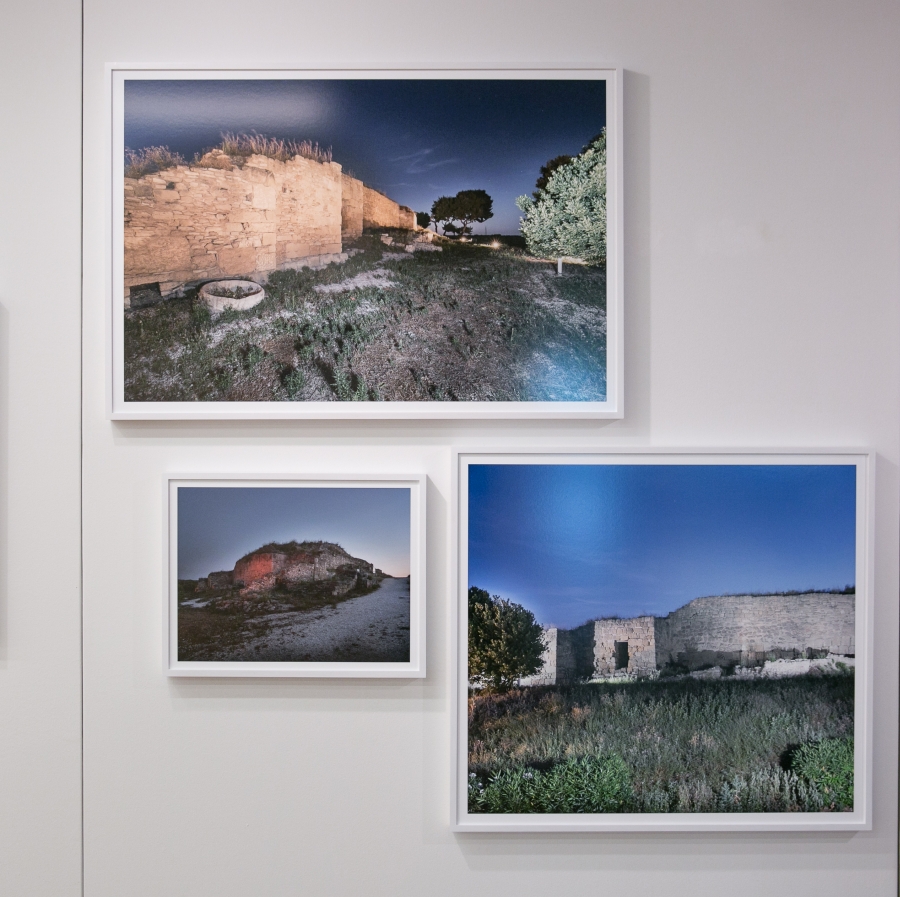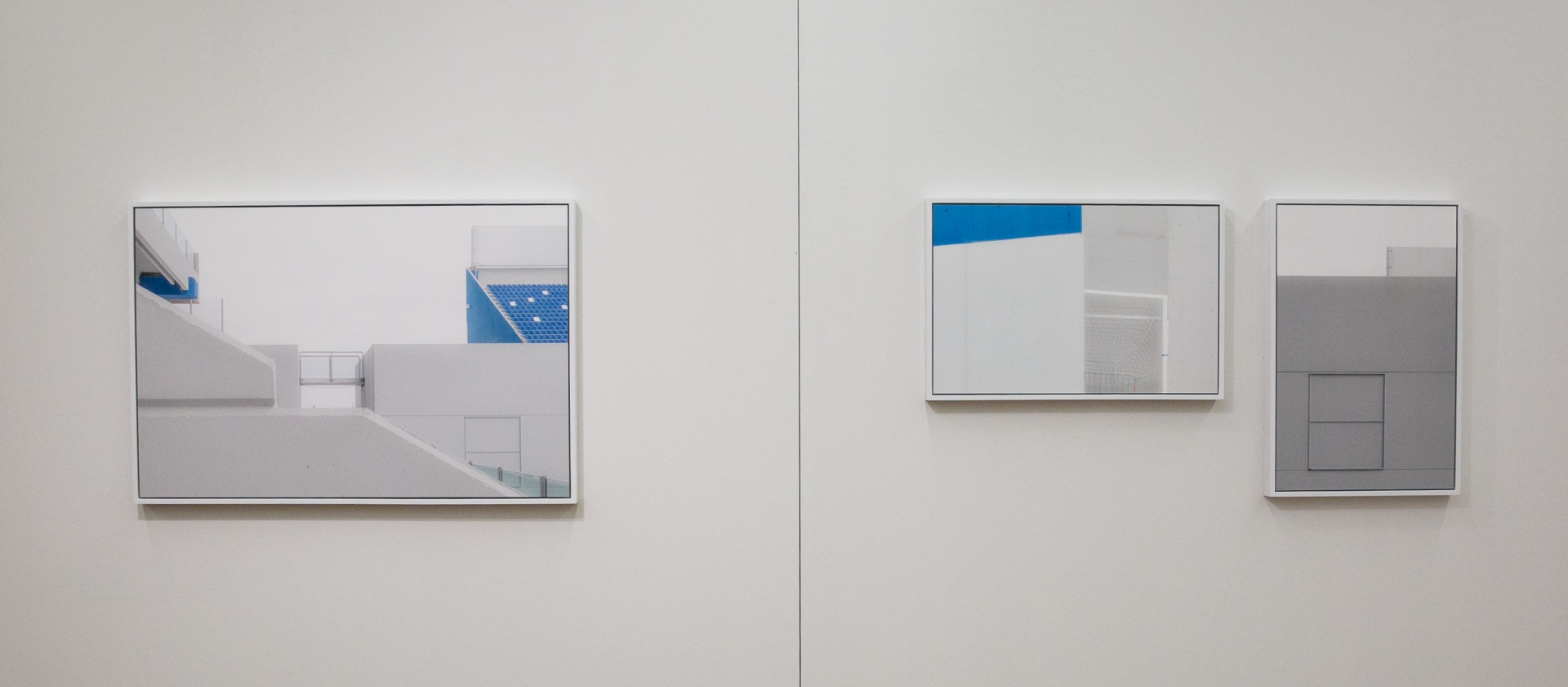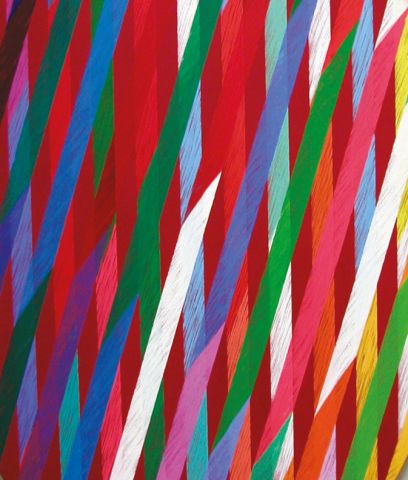Gradations of light
Geographies of Views Between History and Contemporaneity
by Gigliola Foschi and Nadia Stefanel
Six Italian artists, both emerging and internationally recognized (Alessandra Baldoni, Luca Gilli, Cosmo Laera, Luca Marianaccio, Lucrezia Roda, and Pio Tarantini), were invited to illustrate – with different languages, open to new visual strategies – 12 historical and contemporary sites where DZ Engineering intervened using integrated and innovative lighting or telecommunications systems. These are places that can be seen as a cross section of a country – Italy – that can look to the future without forgetting its multiple and layered historical roots.
The exhibition thus becomes a sort of visual journey through history and art: from the Archaeological Park of the Canne della Battaglia, where, in 216 BC, the Romans suffered a devastating defeat at the hands of the Carthaginians led by Hannibal; to the port and the Mausoleum of Galla Placidia in Ravenna, jewel of the fifth century entirely covered with mosaics; Castel del Monte (Unesco Heritage Site, like the mausoleum of Galla Placidia), the famous thirteenth-century castle built by Emperor Frederick II, where complex astrological symbols are combined with sophisticated mathematical, geometric, astronomical references; through Gothic cathedrals, churches, synagogues and monasteries, to finally reach the Chemical District of Ferrara and the Mapei Stadium in Reggio Emilia.
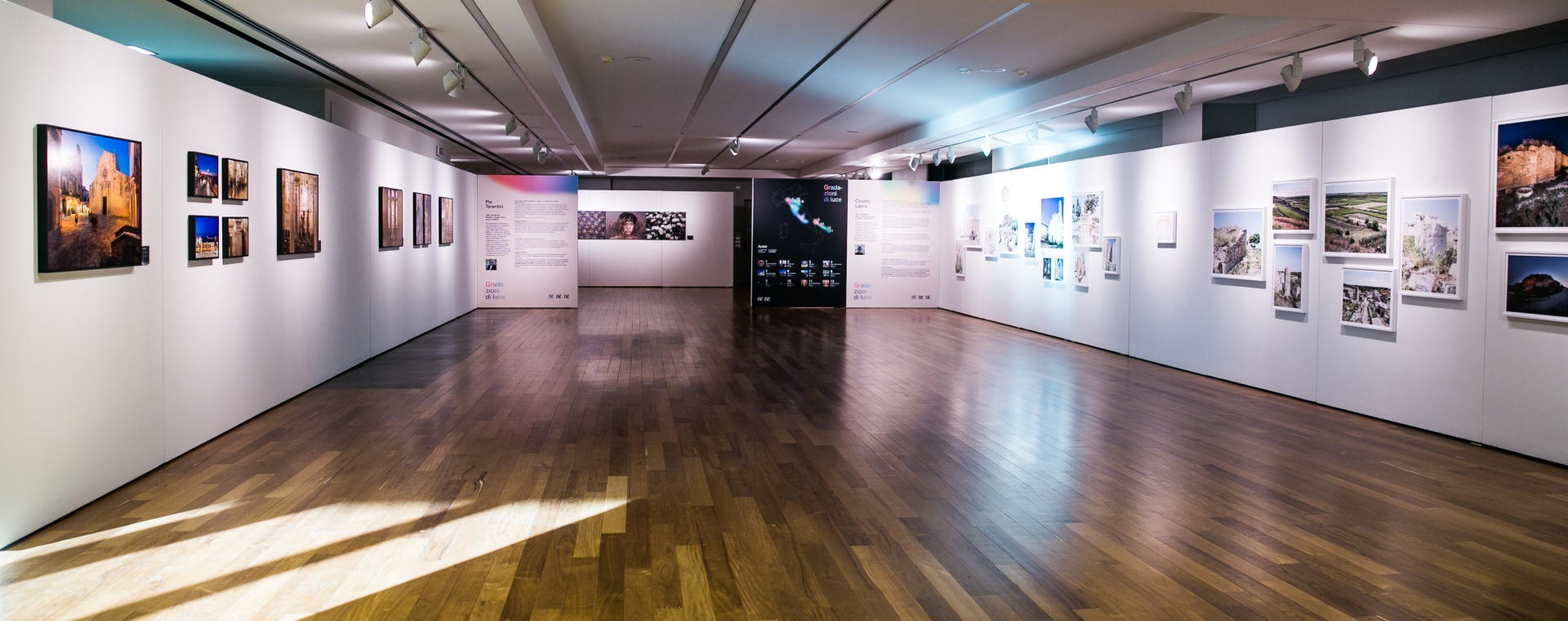
Twelve places interpreted and narrated chasing a light that reveals, observed in the dilated time of twilight, the moment of change and intimacy suspended between day and night, between a declining natural light and an artificial light that advances and creates new relationships and visual experiences. Twelve places that, thanks to the research carried out by the six authors, will also offer a sort of cross section of contemporary Italian photography.
A photograph can explore new languages, but it is always nourished by a visual tradition that has deep roots in the history of Italian painting and the theme of beauty. Despite the expressive diversity and the deliberate generational differences (Pio Tarantini was born in 1950 and Lucrezia Roda, the youngest, in 1992) an “Italian style” based on the delicacy and balance of composition emerges from their works. Each photograph is always the result of a deep and intimate relationship with the places, the history and the flow of time.
These authors never have a “cold”, purely analytical or documentary, view but neither are they deliberately seductive or attractive. Their view is empathetic, affectionate yet precise, straining to examine memories and save them from oblivion, to rediscover a sense of belonging that is rooted in contemplation and not in the fleeting vision, in stillness and expectation, and not in the deafening noise of contemporary life. Rather than show us the places with the boisterous strength of facts, our authors create suspended narratives, sometimes whispered, sometimes more intense, but always vibrant and essential.
In this way, Cosmo Laera (Bastion of St. Scholastica, Abbey of San Leonardo and Canne della Battaglia), with a crisp, dry language, transforms his research into an exploration where every image is a step forward in a journey toward knowledge, done slowly, step by step, to create works that invite us to look more carefully and with greater attention at what may appear negligible. A journey of encounters with people, with stones marked by centuries of history, and views from the front and side, and close-ups. His is also a journey through time, from day to night. From the dazzling lights of the bright Mediterranean summer days, which seem to lighten and wrap everything almost to the point of absorbing it, to a night where artificial light brings another life, another point of view to monuments, sometimes making them almost crystalline, sometimes wrapping them in mystery.
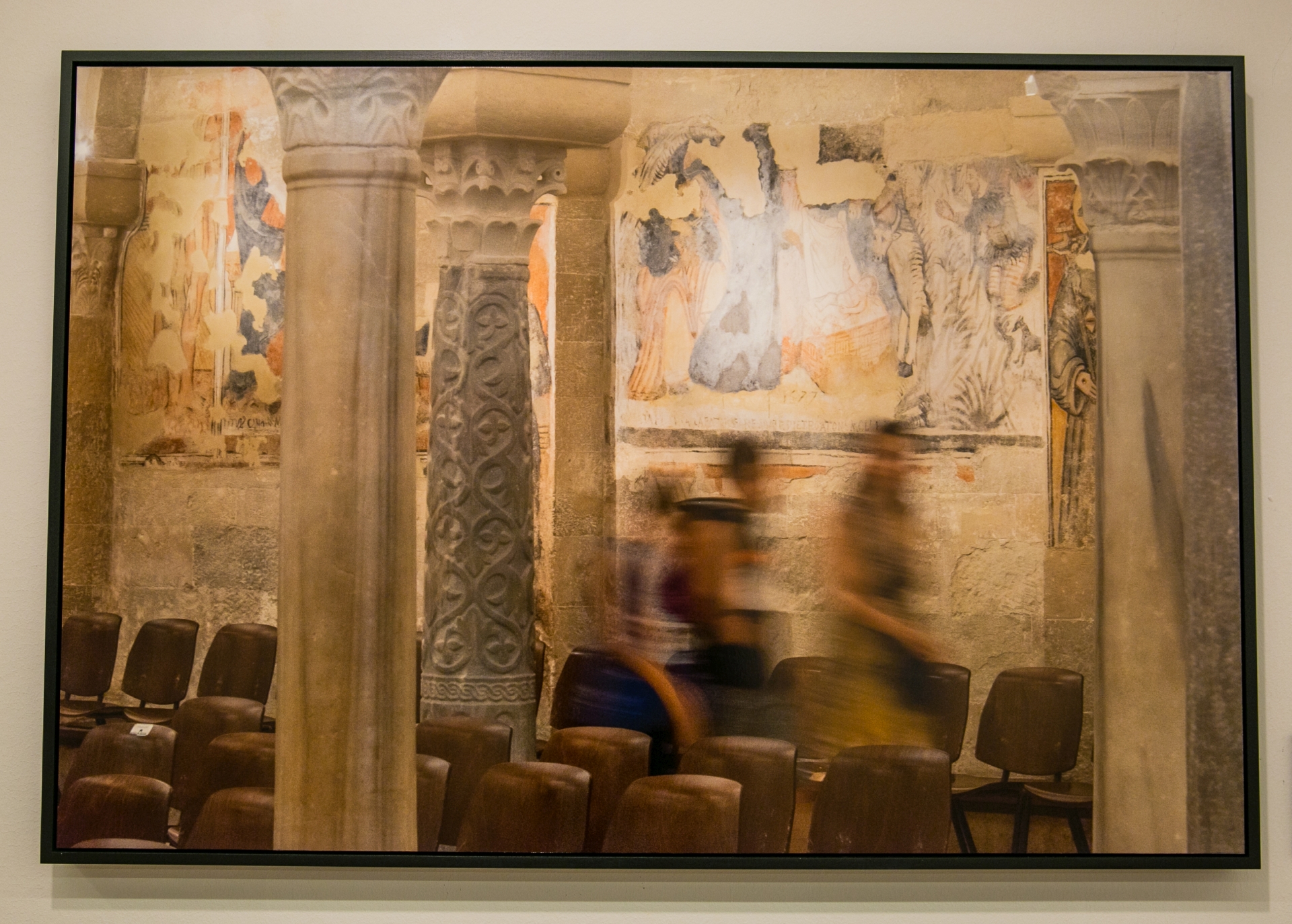
Pio Tarantini (Crypt of the Otranto Cathedral and the Church of Uggiano) animates his images by creating a tension between the accuracy of the places he photographed and the emergence and passing of the people who live there. In his images, time appears dilated, as if to reach out between the past and the present, not conforming to the logic of a photograph that only bears witness to a precise moment in time.

Alessandra Baldoni (Mausoleum of Galla Placidia and the Synagogue of Pisa), starting from the details of places full of spirituality, creates diptychs and triptychs that, thanks to unexpected and poetic juxtapositions, give birth to small stories similar to visual rhymes suspended between mystery and enchantment. Her sequences are like little branched maps that can make you once again hear the voice of the sacred; they are cards to observe the beauty that makes the world rhyme.
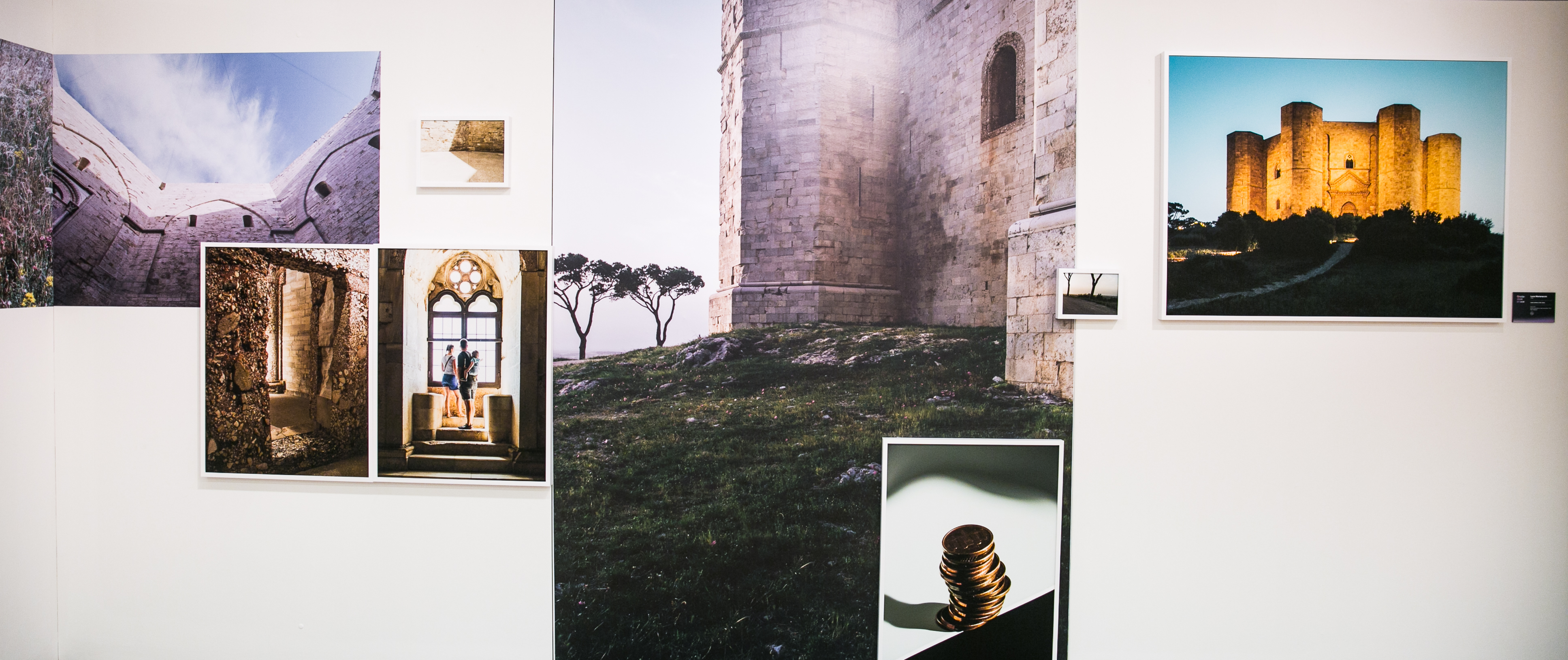
In juxtaposition are the photographs of Luca Marianaccio (Castel del Monte and the Vallelunga racetrack), which contrast the sparse rhythm and cadence of Gilli with an intense and concentrated storytelling, made of essential and dense visual fragments that relate and connect to each other in a timely and, at the same time, unexpected manner. For him the final work is no longer the individual images, but a set of tiles dynamically in dialogue with each other that impose themselves on our sight with enigmatic force. A dialogue that Marianaccio also builds between his two objects of research. Although based on seemingly diametrically opposed sites – one historical and the other for competitive sports – both are in fact “concentration” points within a nature and an environment that welcome them.
Similar to musical scores crossed by a thin chromatic rhythm and immersed in a subdued and luminescent light, the images of Luca Gilli transfigure the space of the Mapei Stadium (Reggio Emilia) without betraying it. He observes it and shows it to us when the crowds of fans are missing and “he” – as if the stadium were a person – can reveal his most secret and hidden aspects. Secrets that the author does not reveal, but quietly and discreetly suggests, subtracting, with lightness, until emptiness takes pride of place within the image, offering unusual viewing possibilities with a fairy-tale twist.
Different again is the research of Lucrezia Roda (Chemical District of Ferrara and the Port of Ravenna), who focuses on the intensity of the individual images in which each photograph transforms the industrial landscape into an almost surreal and mysterious universe, and the buildings into living presences, full of energy or with an aura that is, at times, disturbing. A mystery emphasized by the lights of night and twilight, which allow its “characters” to emerge brightly against the darkness, silhouetted against the blue of the sky to amaze us with their shapes and their strength.

